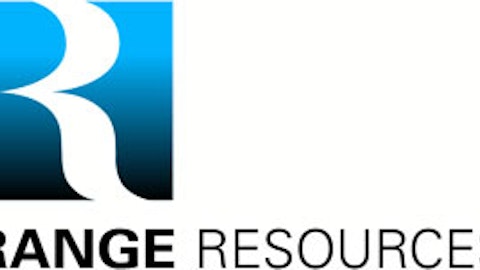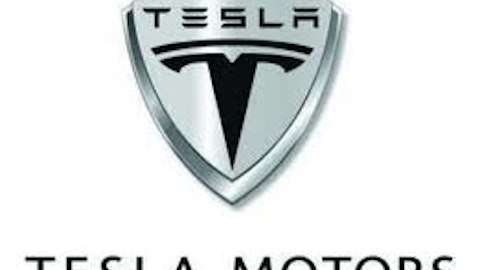Last month, my colleague Sean Williams laid out the bear case for Tesla Motors Inc (NASDAQ:TSLA). In the article, he argues that as good as Tesla’s Q2 earnings results were, they couldn’t possibly justify Tesla Motors Inc (NASDAQ:TSLA)’s valuation at nearly $20 billion.

Tesla is making electric cars a reality.
Sean points out that this implies that Tesla Motors Inc (NASDAQ:TSLA) is worth around $850,000 for each of the 21,000 cars it will produce in 2013. He also notes that even if Tesla boosts its production by a factor of 20, it would still be twice as expensive as Toyota Motor Corporation (ADR) (NYSE:TM) on a value per car basis!
Yet a 20-fold jump in production is just what Tesla bulls expect. In fact, they expect it to happen fairly soon: not next year, but before the end of the decade. The Tesla factory in California has a nominal capacity of 500,000 vehicles per year, and Tesla CEO Elon Musk expects to use all that capacity and more (eventually). If Tesla Motors Inc (NASDAQ:TSLA) manages to grow into its current production capacity by 2018, would that justify its $20 billion market cap? Or would the company need to keep growing well beyond that level to justify buying the stock today?
Tesla 2018: the high-end
Obviously, there is no guarantee that Tesla will meet the lofty goals investors are setting. The company has missed a variety of production milestones in the past, although it has always rallied to come through in the end. As it continues to grow, there will be more headwinds, such as securing an adequate supply of batteries. However, let’s assume that Tesla surmounts these technical challenges, so that demand becomes the limiting factor.
Tesla Motors Inc (NASDAQ:TSLA) believes that there is enough demand in the market for it to ramp up Model S production to a pace of 40,000 units per year by the end of 2014. As it expands its Supercharger network and adds more retail stores and service centers, Tesla expects incremental demand beyond that level.

The Tesla Model S sedan (courtesy of Tesla).
The addition of the Model X crossover in late 2014 will spark additional demand, although it will probably also cannibalize Model S demand to some extent. In any case, it seems challenging for Tesla Motors Inc (NASDAQ:TSLA) to sell more than 100,000 high-end (i.e. priced above $70,000) luxury vehicles per year any time soon. Porsche, a well-established high-end luxury automaker, sold just 141,075 vehicles last year.
Tesla 2018: the low-end
As my colleague — and Tesla bull — Daniel Sparks wrote last month, the real key to Tesla’s growth is the coming of a lower-priced model. which could go into mass production by 2017. On Tesla’s most recent earnings call, CEO Elon Musk said he saw a “clear path” to producing a $35,000 car with a range of at least 200 miles.
However, such an “affordable” car would be much less profitable than the Model S or Model X. While Musk thinks Tesla could potentially rival Porsche with gross margins of 50% or so, that would only be possible if Tesla can maintain its Porsche-like average selling price of roughly $100,000.
A $35,000 car is more likely to have a 15% gross margin. Tesla cannot afford to compromise on quality, so it must start at a quality baseline consistent with other cars in that price range, such as BMW’s 3-Series, Daimler’s Mercedes C-Class, or General Motors Company (NYSE:GM)‘ Cadillac ATS. The additional cost of batteries and an electric powertrain (compared to a standard internal combustion engine) add additional costs for Tesla. Moreover, if Tesla grows as expected, its vehicles will no longer be eligible for the $7,500 federal tax credit in the U.S., which begins to phase out after a manufacturer produces 200,000 plug-in or all-electric vehicles.
Pulling it together
If Tesla can really sell 400,000 “affordable” cars in 2018 for $35,000 while at a 15% gross margin, this would translate to just over $2 billion in gross profit. By contrast, Tesla Motors Inc (NASDAQ:TSLA)’s operating expenses are currently at a $450 million annual run-rate. However, with Tesla going from one product today to three to four products in 2018 and growing sales more than 20-fold, operating expenses could easily soar to $2 billion or even more by then.
In other words, while a cheaper car will dramatically boost volumes, and could contribute $2 billion to gross profit, much or all of that revenue will be offset by corresponding increases in operating expenses. To produce billions of dollars of free cash flow — which is essentially what Tesla’s valuation implies it will do — Tesla will really need to boost gross profit from its high-end vehicles to Porsche-like levels.
Is that possible? Perhaps. It’s plausible enough that I won’t risk shorting Tesla at this point. But it doesn’t make Tesla a buy, either. Everything has to go right just for investors to earn a market rate of return.
The article Where Is Tesla’s Long-Term Upside? originally appeared on Fool.com and is written by Adam Levine-Weinberg.
Fool contributor Adam Levine-Weinberg has no position in any stocks mentioned. The Motley Fool recommends General Motors and Tesla Motors. The Motley Fool owns shares of Tesla Motors.
Copyright © 1995 – 2013 The Motley Fool, LLC. All rights reserved. The Motley Fool has a disclosure policy.





